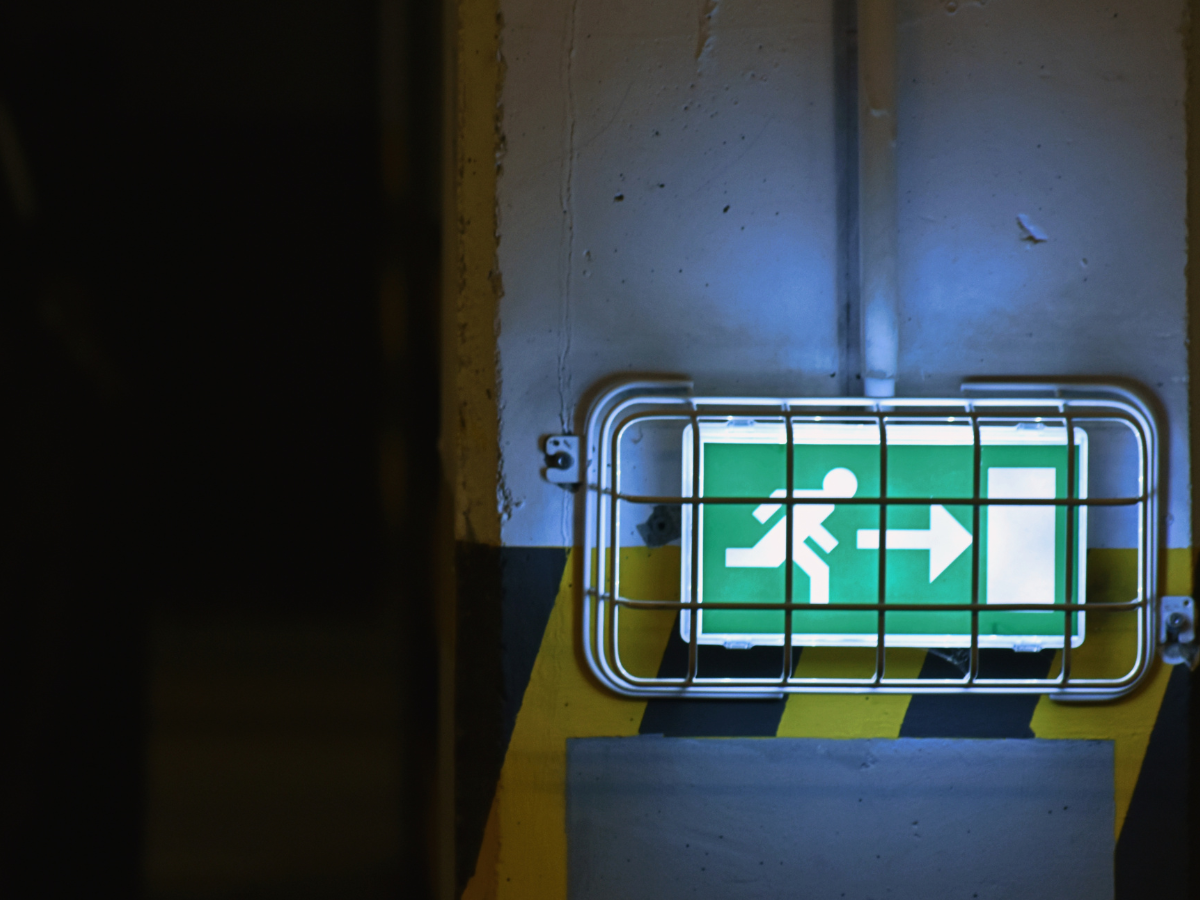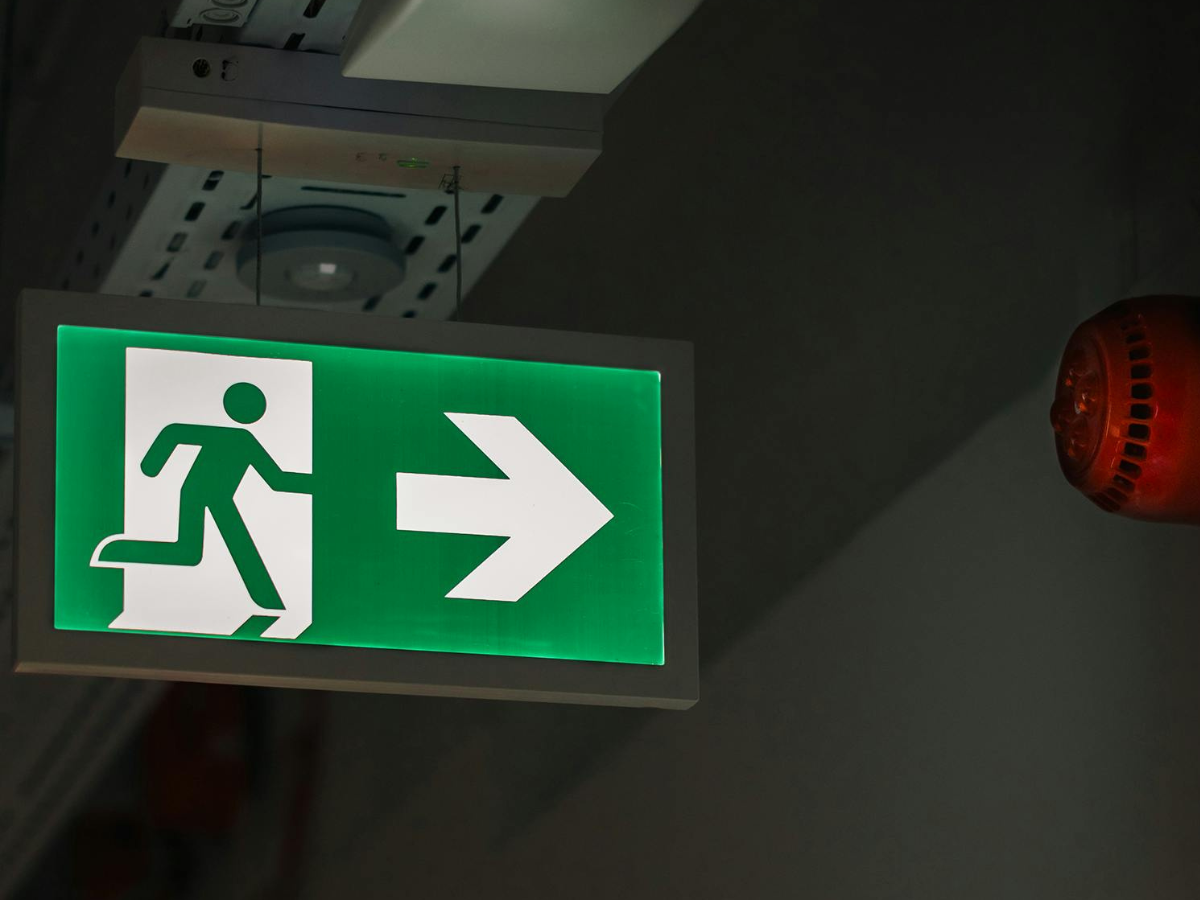Emergency lighting is something most people only notice when the power goes out – and by then, it needs to work flawlessly. That’s why emergency lighting testing is such a crucial part of your fire safety responsibilities.
But how often should emergency lights be tested, and what’s expected of businesses across the UK? Let’s break it down, clearly and simply.
What does the law say about emergency lighting checks?
UK legislation places a legal duty on the “responsible person” for a premises to make sure emergency lighting is maintained in good working order. This falls under the Regulatory Reform (Fire Safety) Order 2005.
The official testing guidelines come from BS 5266‑1, the British Standard for emergency lighting. While it’s not a legal document in itself, it’s widely used as the benchmark for compliance.
So, if you’re asking how often does emergency lighting need to be tested, the answer lies in two key types of checks: monthly and annual.
Emergency Lighting Test Frequency
Here’s a simple overview of the required test intervals:
- Monthly Emergency Lighting Test
A quick functional test – often called a "flick test". This simulates a power failure to make sure each emergency light comes on properly. It’s typically carried out by a site manager, caretaker, or trained staff member. - Annual Emergency Light Test (Full Duration)
A longer test, usually lasting 1 to 3 hours (depending on the system’s rated battery life). This confirms the lights stay on for the full expected duration in the event of a mains failure. - Daily Visual Checks
Some systems – particularly those with central battery units – may need daily checks of status indicators. This isn’t always required but is common in high-occupancy or high-risk buildings.
Who can carry out emergency lighting tests?
Monthly tests can often be carried out in-house by someone with basic training. For the annual full-duration test, it’s recommended to use a competent person – someone with the technical knowledge to test batteries, circuits, and fittings thoroughly.
While Highland Services focuses on installing compliant emergency and security lighting systems, they can advise on the setup needed to support your testing regime from day one. Getting the system right at the installation stage makes ongoing maintenance far simpler.

Why is monthly testing important?
The monthly flick test helps catch common problems early – dead bulbs, failed batteries, or fittings blocked by new shelving or signage. These checks don’t take long, but they’re key to avoiding a serious issue during an actual power cut or fire.
All results should be logged in a fire safety logbook. If anything fails, repairs or replacements should happen without delay.
The role of full-duration annual testing
The 3-hour emergency lighting test (or however long your system is rated for) ensures that lights don’t just come on – they stay on long enough to support a safe evacuation.
This test often reveals deeper issues like batteries that won’t hold charge or fittings that only partially light. As with monthly checks, everything should be documented.
Installing compliant emergency lighting systems
Testing is only part of the picture. The system needs to be designed and installed correctly in the first place to meet UK regulations. That’s where Highland Services come in.
Whether you’re fitting out a new premises or upgrading an older one, we install emergency lighting systems that align with BS 5266‑1, BS EN 50172, and HSE recommendations. We also offer advice on locations, signage integration, and system types – from maintained to non-maintained setups.

Final thoughts
If you’re responsible for a building, it’s essential to know how often you should test your emergency lighting. Monthly flick tests and annual duration tests aren’t optional – they’re a legal requirement, and more importantly, a life-saving measure.
By installing a compliant system and keeping up with routine checks, you’re protecting your people and meeting your obligations.
Need help getting your emergency lighting up to standard?
Highland Services are trusted installers of emergency lighting systems across South Wales and beyond. If you're planning a new installation or need advice on upgrading your current setup to meet the latest regulations, we’re here to help.
Contact our team to discuss your requirements or request a site assessment.



.png)
